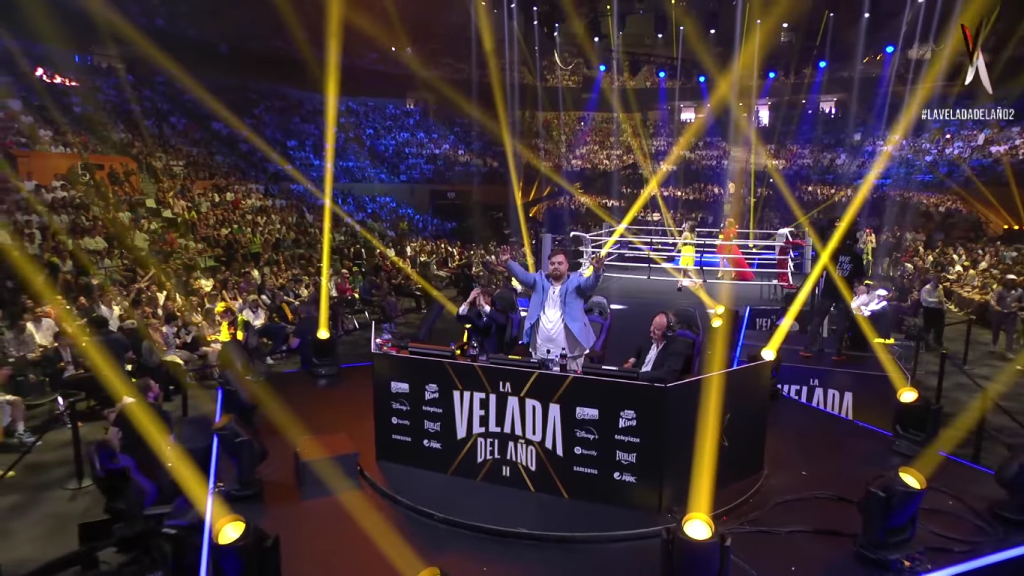
Despite their glitz and glamour, esports events have always been a niche thing. If you’re not a fan of League of Legends, you probably didn’t watch Worlds 2022. Even if you are a fan of League of Legends, it’s still no guarantee you watched Worlds 2022, as a major chunk of gamers do not engage in esports.
That reality has meant tournament organisers (TOs) and publishers have needed to innovate new ways of broadcasting, reaching, and engaging audiences. For years, in-game loot drops have been a successful model that publishers and TOs have leveraged. It’s simple: you watch the stream for X amount of time, you receive Y prize. It’s an easy win-win where publishers get to boost their metrics, and fans get free loot.
But while this method does well in terms of reaching audiences, it’s not as good at engaging them. Fans with fleeting attention spans pulled in by the rewards soon realised they could simply leave broadcasts open in the background for the prizes and go back to watching their favourite streamer instead.
The solution, publishers and tournament organisers are realising, is to bring those favourite streamers to the esport.

Taking note of the colossal growth of the creator industry and the rise in popularity of variety streaming, tournament organisers are leveraging co-streaming to boost viewership and engagement of their events.
Co-streaming involves a tournament organiser granting certain streamers permission to stream the event on their own channels. It has become such a large contributor to Twitch’s esports viewership that co-streaming functionality was officially implemented on the streaming platform. As Twitch defines it, “co-streaming is a feature that lets you air another broadcast on your channel while you provide unique commentary on the action.” In simpler terms, it’s a massive virtual watchparty.
The influence of co-streamers is being leveraged on a global scale. Brazilian streamer Alexandre ‘Gaules’ Borba Chiqueta, widely known for co-streaming Counter-Strike: Global Offensive tournaments for a large Brazilian fanbase, partnered with Formula 1 and Twitch to co-stream the entire race weekend of the 2021 São Paulo Grand Prix for free. The stream drew in over 100,000 viewers, according to TwitchTracker.
From a statistical standpoint, co-streaming has boosted viewership numbers and contributes a large portion of viewers for events. According to info from Stream Hatchet, Gaules broke personal records and consistently held the highest-viewed stream during the 2022 CS:GO PGL Antwerp Major.
In an intense match between Imperial, a Brazilian organisation, and Cloud9, Gaules’ co-stream recorded a peak viewership of 684,000, whereas the official main stream reached a significantly smaller figure of 114,000. This is true across other titles as well, though no other esport has seen as big of a viewership imbalance in favour of co-streamers.
In Q2 2021, about 31% of the hours watched in top North American esports events came from co-streaming, StreamHatchet found. During the Grand Finals of VALORANT’s 2021 Stage 1 Masters specifically, three co-streamers controlled over 60% of the tournament’s 230,000 peak viewers, Upcomer reported.
Meanwhile, in 2022, the League of Legends World Championship boasted a 5.1m peak viewer count, the second highest-ever for an esports event. Just two co-streamers contributed over half a million viewers to that figure.
It’s not just about boosting statistics, either. John Needham, President of Esports at Riot Games, in a recent blog post spoke of the importance of co-streaming as a funnel to onboard new fans to the game. “Gaming influencers and streamers are much better at describing the fundamentals of a game, one reason why we are increasingly opening up our broadcasts for co-streaming,” Needham explained.
Co-streaming has proved so potent that it’s spreading outside of esports. Discussing standout trends in esports in a 2022 Industry Review, Associate Director of The Story Mob Miles Yim told Esports Insider: “one [trend] that I enjoyed quite a bit was the further proliferation of co-streaming in mainstream media.” As Yim points out, co-streaming — an esports innovation — has been picked up and influenced the wider-sport media landscape.
In 2018, at-the-time Twitch star and gaming celebrity Tyler ‘Ninja’ Blevins was given the opportunity to guest cast the National Football League’s (NFL) Thursday Night Football. Ever since, co-streams have only been on the rise. As of the 2021 season, the NFL and ESPN co-produce the ManningCast, a live TV broadcast hosted by former NFL stars that streams NFL matches and is aired on ESPN.

The rapid growth of co-streaming within the industry has also seen publishers and TOs give re-streaming access to certain esports organisations and brands. Most recently and most notably, Riot Games’ LEC announced ‘co-streaming partnerships’ with Team Heretics and KOI for the 2023 season, two of its participant league members and two Spanish top-dog organisations — the former of which is co-founded by Ibai Llanos, a highly popular content creator.
And, despite a lower peak viewership count, the league recorded an increase in average viewers. Specifically KOI, a creator-led organisation founded in 2021, scored the second-highest in total hours watched and average viewers, at 7.6m and 343,500 respectively, according to Esports Charts.
Co-streaming’s positive effect on viewership is well-documented and obvious, but there’s a few less obvious downsides that can arguably result from the practice. One of the main concerns is that TOs lose control over how their broadcast and broadcast partners are presented.
Streamers that aren’t in line with tournament sponsors’ brand, or that speak ill of an event and its sponsors, “could result in the loss of imperative revenue for the tournament organiser going forward,” as former esports journalist Adam Fitch argued in an opinion piece for Dexerto. Or, as esports personality Christopher ‘MonteCristo’ Mykles put it: “Imagine what happens to VALORANT esports when a different game pays Shroud to co-stream right on top of a VALORANT event.”
The other concern is the deprivation of narrative when co-streams are broadcasting a tournament. “Narratives are important in creating interest in particular match-ups, continuing storylines, and thus carrying viewership from one event to the next,” Fitch explained in his article. If the focus is on the streamer, not the broadcast talent, it could hurt tournament series in the long run.

In 2021, Riot Games experimented with having publicly-open co-streaming, where it allowed any 18+ Twitch, YouTube Gaming, Facebook Gaming, or Caffeine streamer, regardless of stream size or popularity, to co-stream its North American VALORANT Champions Tour (NA VCT) — as long as a few basic rules were followed.
One of those rules read that “VCT sponsors, sponsored segments, or stitched commercials may not be altered or covered in any way.” Riot also permitted the usage of personal sponsors as long as they did not ‘conflict’ with the main broadcast’s sponsors. Yet questions remain over how that could be moderated — and how TOs would respond to sponsors’ concerns over a negative remark made by a co-streamer.
If you’ve ever watched an esports tournament, statistics say you’ve probably watched someone else watch it. Co-streaming is becoming increasingly popular thanks to a cultural shift towards streamers, influencers and content creators.
Tournament organisers who are utilising co-streaming right now are recording impressive numbers, leveraging the considerable influence of content creators and directing it at esports. But the long-term effects it may have on viewership, sponsorship, and esports more broadly, remain to be seen.
